INTRODUCTION
The automatic presses used in the manufacture of caps or standard funds for metal containers require careful attention. The reliability of them depends to a large extent on the state of the press. There are many elements of a press that can negatively affect the quality of the parts manufactured by them, regardless of the state of the tooling, which is another decisive factor in the manufacture.
In this case we will focus exclusively on the machine itself, leaving for another job the influence of the die.
PREVENTIVE MAINTENANCE
Periodically it is required to verify in depth each of the main elements of the press, detecting what is the current state of each one, and depending on it, establish the necessary corrective measures to return to leave said element in perfect working conditions and thus ensure that cooperate in order to obtain the desired quality of the product.
Without wishing to be exhaustive, we can mention, among others, the following organs of the press that act decisively on the quality of tapas:
– System of feeding or catching strips from the warehouse: The suction cups must be in good condition to maintain the vacuum, free of dirt, oils, humidity, … A bad collection of the strip can generate a jam, and the contribution of foreign particles (traces of rubber, oil …) or stripes. The feeder arms will have a good alignment and few clearances to ensure good feeding of the belt.
– Main and auxiliary strips feeding strips: They have to be well adjusted, the presence of excessive clearances can cause inaccuracies in the displacement of the bands, with variations in the trimming. The fingers of these bars must be well aligned in height and not present marks of use, which can also affect the cut between blow and blow, an important point especially in lithographed lids.
– Feeding table: It will not present blows, burrs, scratches, … so as not to damage the protective varnish of the band.
– Fund ejectors: Well aligned, synchronized and in good mechanical conditions and getting a correct ejection of the pieces.
– Clutches and brake: Essential parts for the safety and mechanical functioning of the press.
– Crankshaft: Fundamental the state of the support bearings, which will affect slack. Deflection of the same in charge.
– Carriage: Very important its parallelism with the table, so that the die works well, especially if it is guided with columns. Likewise its lateral clearance, that is to say the state of its tails, which will affect the life of the die.
– Securities: Both the mechanical – die guards and moving parts -, as the electric – double sheet detector, various safety switches – to prevent accidents.
– Cutting table of the die: On it slides the band. It must not provide scratches or damage to it. The precision of cutting the punch on the strip will depend on how well the guide and brake system works.
– Exit of covers: Unloading of pieces to the rizadora well positioned and in good condition
– Lubrication: Well maintained system with all active and well-regulated greasing points
ORGANIZATION OF MAINTENANCE
To have all these elements under control, it is best to have a tracking schedule, where all of them are properly reflected. At the end of this work, a report of this type is presented as an example, which can serve as a guide to carry out the verification of the state of the equipment and from it to draw up a maintenance and repair plan for the press.
In this example we present a series of columns whose functions are:
– Nº: It allows to establish a number of order in the check work and it serves for a later organization of the tasks.
– Reference : Describe the specific organ or element to be checked.
– Specification : Mark the measurements, tolerances and conditions to be met at each point.
– Current: It reflects the real values taken on each organ.
– Reject points : Evaluate the relative importance of each of the points verified in relation to others.
– Comments and corrections: Blank space to record the observations that may be appropriate in each case.
The report is completed with a heading where the data of the equipment under study is reflected, such as the model of the machine, the background it produces, the counter hours – hours worked -, etc.

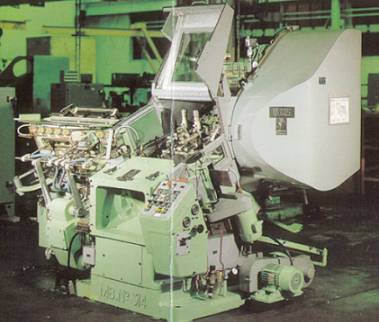
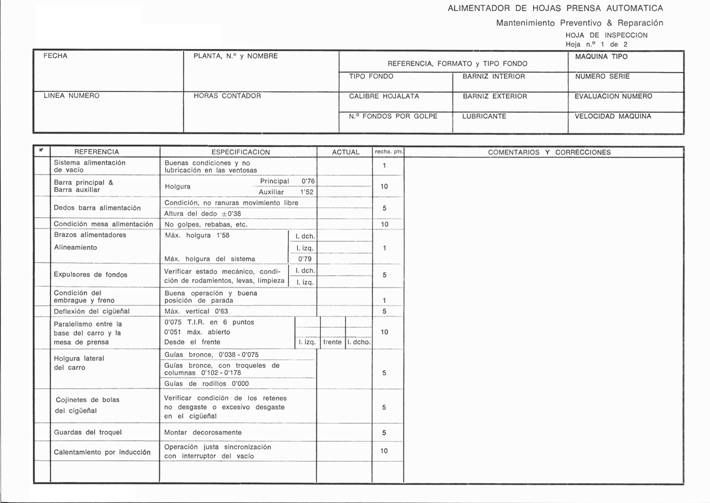
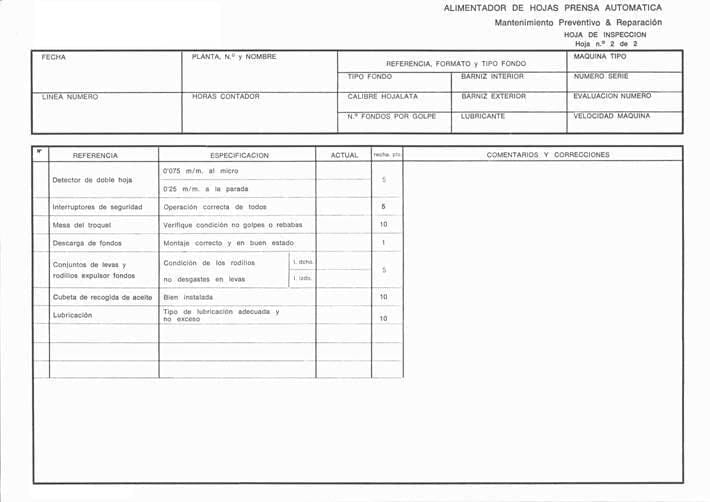
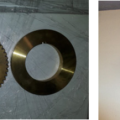

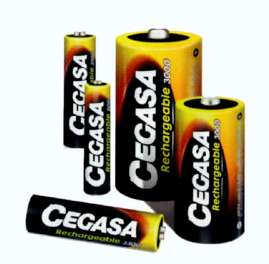
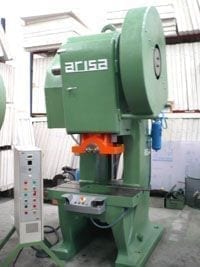
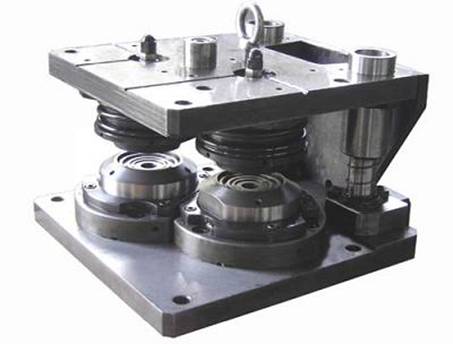
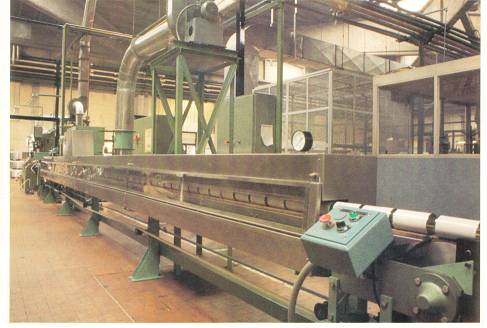

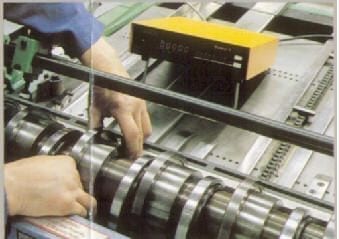




0 Comments